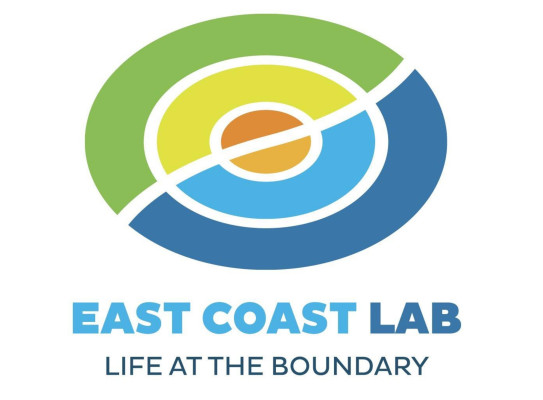East Coast LABLife at the Boundary

This collaborative programme makes it easy and exciting to learn more about the natural hazards that can affect the East Coast.
Overview
East Coast LAB [Life at the Boundary] brings together scientists, emergency managers, experts and stakeholders across the East Coast to discover more about natural hazards and how they affect us. They have been helping GNS Science and other organisations take Hikurangi Subduction Earthquake science to communities since 2015.
The project aims to
- make it easy and exciting to discover more about natural hazards and how they can affect us
- provide a central place for the public to access science being conducted at our boundary
To achieve these objectives, the project
- facilitates public engagement through educational activities, outreach and citizen science projects
- provides freely accessible learning resources about the science, risks, and hazards associated with the Hikurangi plate boundary
- ensure communities know how to prepare and respond to hazard events, and in the event of a natural hazard continue to thrive
The project
Life at the Boundary
The East Coast of New Zealand’s North Island is close to the boundary of two tectonic plates. The area where the plates meet is known as the Hikurangi Subduction Zone, where the Pacific Plate subducts or dives down under the Australian Plate. The Hikurangi Subduction Zone is New Zealand's largest and most active fault, stretching offshore from Gisborne down to the top of the South Island. Scientific research has shown that the Hikurangi subduction zone has a history of generating large earthquakes and tsunami. While we can’t predict when earthquakes will occur, recent science suggests there is a 1-in-4 chance of a magnitude 8 Hikurangi subduction zone earthquake in the next fifty years.
Living so close to this boundary means that we could be affected by a number of natural hazards like earthquakes, tsunami, coastal erosion and even volcanoes. The more we understand about what causes these natural hazards to happen, the better we can be prepared.
The East Coast LAB (Life at the Boundary) engages with scientists, researchers, local emergency management advisors, local community groups and schools to share existing and new knowledge about the Hikurangi plate boundary. GNS science is grateful to their tremendous efforts to make our science understood and useful.
A central place for sharing science
The presence of the Hikurangi plate boundary means we have a natural lab on our doorstep. Researchers from a number of different science fields are working to discover more about the plate boundary and how natural hazards affect us. The East Coast LAB provides up to date information on the research happening along the boundary.
You can search for information related to specific research activities on the East Coast LAB website. There is a compiled list of frequently asked questions, with answers provided by the scientists working on the boundary.
Educational activities and resources
The East Coast LAB curates a collection of activities and resources for students and educators. These include:
- Activities for kids (under 5 year olds; 5-12 year olds; 13 year olds +)
- Learning modules – What’s On Our Plates? is a set of multimedia learning modules designed to enable anyone to explore the active plate boundary online, including the Alpine Fault and Hikurangi subduction zone.
- Resources for everyone to explore, such as databases, guides/reports, and guides for making a household emergency plan.
Hands-on discovery
East Coast LAB provides hands-on opportunities to discover more about earthquakes, tsunami and volcanic eruptions and how they affect us through these avenues:
- LAB, National Aquarium of New Zealand: Step into the LAB and discover more about earthquakes, tsunami and volcanic eruptions.
- LEARNZ Virtual Field Trips: Take part in a free virtual field trip to learn more about natural hazards along the Hikurangi plate boundary
- Ship to Shore Science: Uncover research at the plate boundary and connect your students LIVE to the ship R/V JOIDES Resolution while it's working at sea
- Life at the Boundary Roadshow: Join East Coast LAB, scientists, and your local emergency management advisors to hear about the latest Hikurangi subduction zone science and hazard impact information at these free public events.
- Citizen Science projects: If you would like to actively contribute to our science research, consider participating in a citizen science initiative. Participation in citizen science projects adds valuable information about out natural hazards. We also hope you will learn more about natural hazards by participating.
Research project details
Collaborators: Tairāwhiti Civil Defence Emergency Management Group; Hawke’s Bay Civil Defence Emergency Management Group; Manawatū/Whanganui Civil Defence Emergency Management Group; Wellington Regional Emergency Management Office; National Emergency Management Agency; the Natural Hazards Commission Toka Tū Ake; GNS Science; National Institute of Water and Atmospheric Research (NIWA); Te Herenga Waka — Victoria University of Wellington; Massey University; QuakeCoRE; National Aquarium of New Zealand
Duration
2015–present
Funding platform
Hikurangi Subduction Earthquakes and Slip Behaviour MBIE Endeavour Fund programme, SSIF (TRAMZ)
Status
Current
Programme leaders
Georgia McCombe (ECLAB Project Leader; Hawke’s Bay Regional Council)
Stuart Henrys (GNS Science representative on the East Coast LAB Steering Group)
Funder
Hawke’s Bay Regional Council; GNS Science; the Natural Hazards Commission Toka Tū Ake; MBIE